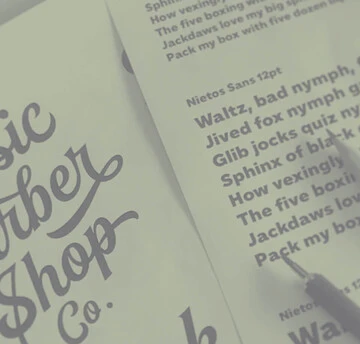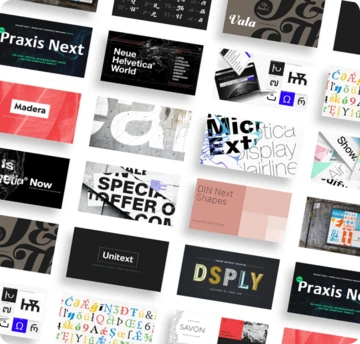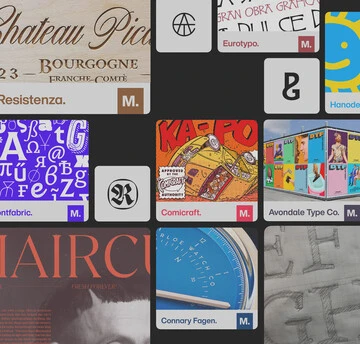Typographies
Thought Leadership

Thought Leadership
Typographies
Charles Nix, Executive Creative Director
We talk about typography a lot—especially at Monotype. But as someone who spent a good deal of time teaching design and typography—and even more time designing with type—I’m acutely aware that the term means different things to different people. So, when it comes to defining typography, I pull a couple of typical “designer reframing the problem” answers: Which typography? Whose typography?
When you look at the idea of typography from the “whose” angle, there are at least four answers: those who make type; those who use type; those who read type; and those who think about type.
“About type” is meta-typography—the typography about typography. This was me as a student of James Craig and William Bevington, studying about type history, about typefaces, and about ideas of what makes great typography. This was me as a type teacher at Parsons School of Design for two decades, sharing that same information with a new group of would-be typographers. This is me as a reader of books on type—and this is me at this very moment writing to you about type.
At Monotype, we make type. Our Studio creates custom typefaces for brands all over the globe. They create retail typeface designs that anyone can license. We partner with thousands of foundries who also make type. The “making” of typography has very specific concerns—and methods—and software—and end products (fonts/font files). Making type is also engineering type and managing type design projects. It has evolved dramatically since 1377 in Korea and 1450 in Germany, but the idea of a tool or machine for encoding language remains.
At Monotype, we also sell type—or, more specifically, we license it in the form of font software/fonts. The commerce of typography is still another facet. How the type (fonts/font files) make it to font users and font uses is no small typography. Indeed, a huge part of the Monotype global workforce is individuals charged with shepherding that transaction. Typographic commerce involves the licenses, the salespeople who connect fonts to users; and the websites where one purchases and downloads fonts.
You and everyone you know uses type. Some use it with aplomb, and some use it without a thought. Some design with type to produce exquisite, resonant, and successful brands. Others accidentally or incidentally design with type when they compose an email or write a memo. In the 21st century, everyone is a typographer—everyone uses type. And it’s not just humans. Our screens and devices use type too. Every design we make on a computer (or a smartphone) and every design we print on paper (or plastic, or billboard, or sign, or even cake) is part of the typography of use.
And what does it all aim at? What purpose do meta-typography, making typography, typography commerce, and using typography move toward? It’s about reading—about consuming typography and the ideas carried along with the meaning of words. It’s the effect of typography, which ranges from a perfunctory decoding of thought to a fantastic form of language that is itself a message.
What is typography? Well, it depends. Who’s asking?
Charles Nix is an Executive Creative Director at Monotype, as well as a designer, typographer and educator. Read more about Charles.

Senior Executive Creative Director
Charles Nix.
Charles Nix is a Senior Executive Creative Director, designer, typographer and educator. He was lead designer for Helvetica Now and has designed a number of popular typefaces in the Monotype Library, including Walbaum and Hope Sans, which received a Certificate of Typographic Excellence in the 22nd Annual Type Directors Club Typeface Design Competition.
Share on Social Media











